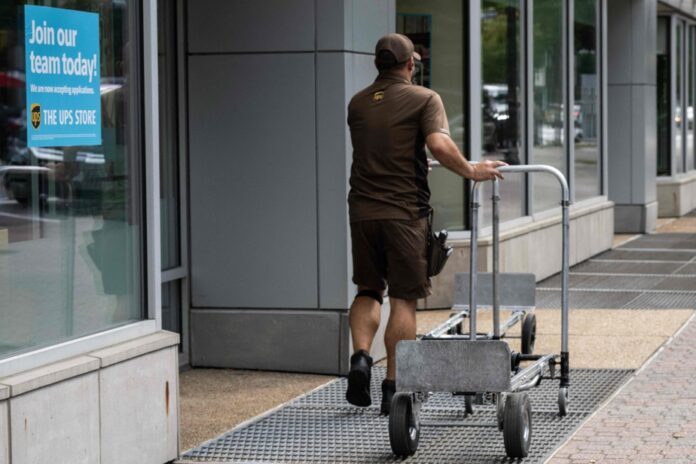(Washington) Job creation rebounded unexpectedly in September in the United States, blurring the path to a return to a balance between the number of available workers and vacant jobs, after more than two years of labor shortage. of work.
In September, 336,000 positions were created, twice as many as expected, the Labor Department announced Friday. Unemployment remains stable at 3.8%.
President Joe Biden praised Friday morning, during a speech at the White House, a jobs market that benefits women, African-American and Hispanic workers, people with disabilities, “people who have been left accounted for in previous economic recoveries.”
“We have the largest share of working-age Americans in the workforce in 20 years. It’s no coincidence, it’s Bidenomics,” he added, referring to the nickname given to his economic policy.
The leisure and hospitality, health, technical, professional and scientific services and social assistance sectors mainly hired people, as did the public sector – education and local administration –, specifies the Department of Labor .
“We could be in the midst of a sustainable increase in labor supply,” analyzes Jason Furman, Harvard professor and former White House economist, in a tweet.
The figures for July and August were also revised upwards, to 236,000 and 227,000 job creations respectively. In total over these two months, 119,000 more jobs were created than initially announced.
These figures “signal a solid positive dynamic in employment growth”, underlines Rubeela Farooqi, economist for HFE.
However, she qualifies, emphasizing that “wages have decelerated and the unemployment rate has remained stable at its highest level since February 2022”, which could signal that the situation continues to rebalance.
The United States has experienced a significant labor shortage for two years, which has caused wages to soar, contributing to inflation. But by August, an influx of new workers had pushed the unemployment rate to 3.8%, its highest level since February 2022, suggesting that the situation could begin to rebalance.
Analysts, therefore, expected a slowdown in September, and were counting on 158,000 job creations, and a slight drop in unemployment, to 3.7%, according to the Briefing.com consensus.
Especially since the figures for the private sector alone, published on Wednesday, showed job creation halved compared to August, according to the monthly ADP/Stanford Lab survey.
This is the lowest rate of growth observed since January 2021 and it marks a “deepening of the slowdown”, which is accompanied by a “marked decline in the rate of growth of wages over the last twelve months”, commented the ADP chief economist, Nela Richardson.
The signals are not all pointing in the same direction, however. The number of job vacancies jumped unexpectedly in late August to 9.6 million, according to data released Tuesday by the Labor Department in its JOLTS report.
This shows that the labor shortage remains strong, and could weigh in the balance in favor of an additional increase in rates from the American central bank (Fed).
The employment situation is in fact being watched very closely by the Fed, which is working to bring down inflation.
The president of the institution, Jerome Powell, traveled Monday to York, Pennsylvania, a city whose activity is mainly manufacturing, to meet economic players.
The majority said that recruitment difficulties remained their main concern.
Economic actors also cited, among their difficulties, inflation, or the rise in interest rates, which restricts their ability to invest and therefore to grow.











